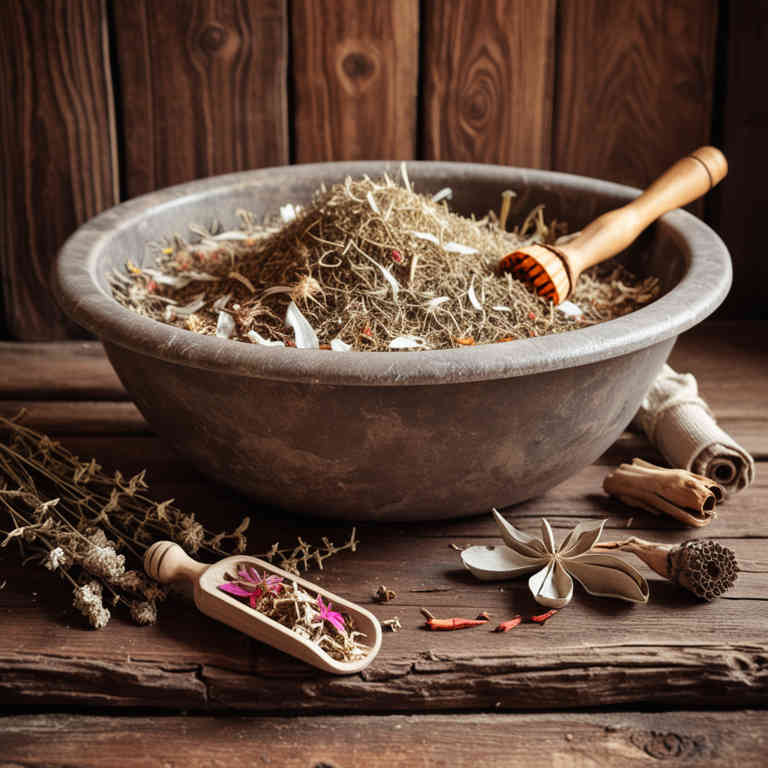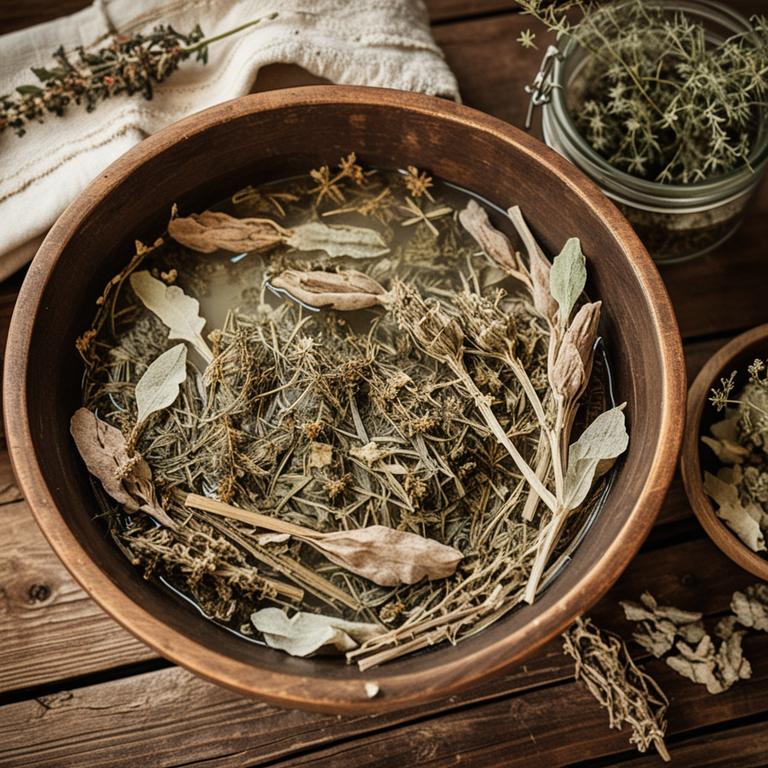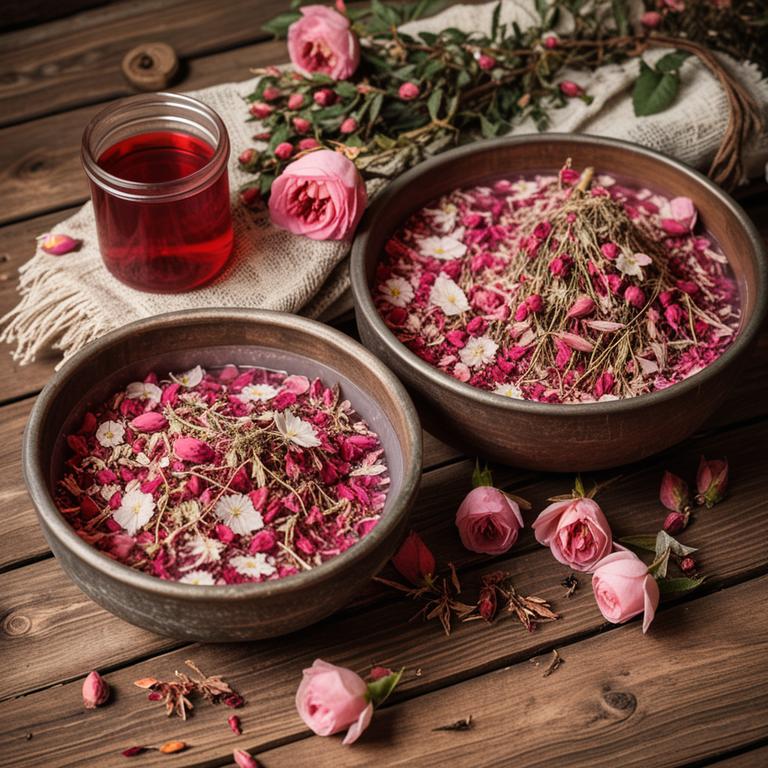10 Best Herbal Baths For Osteoarthritis

Herbal baths have gained attention as a complementary therapy for managing osteoarthritis symptoms, offering a natural and soothing approach to relief.
Certain herbs, such as lavender, eucalyptus, and chamomile, are believed to possess anti-inflammatory and analgesic properties that may help reduce joint pain and stiffness. These baths work by promoting relaxation, improving circulation, and alleviating muscle tension around affected joints. To use them effectively, it is recommended to steep the herbs in hot water and soak for 15 to 30 minutes, ensuring the water temperature remains comfortable to avoid skin irritation.
While herbal baths are generally safe, individuals should consult with a healthcare provider before incorporating them into their treatment plan, especially if they have existing health conditions or are taking medications.
FREE Herb Drying Checklist
How to make sure every batch retains maximum flavor, color, and aroma without the risk of mold or over-drying. Eliminate guesswork and trial-and-error, making herb drying faster, easier, and more efficient every time.
Table of Contents
1. Equisetum arvense

Equisetum arvense, commonly known as field horsetail, has been traditionally used in herbal baths to alleviate symptoms of osteoarthritis due to its high concentration of silica and other minerals.
The plant’s anti-inflammatory and detoxifying properties are believed to help reduce joint pain and stiffness when used in warm water baths. These baths are often prepared by steeping dried horsetail in hot water and then soaking the affected areas, promoting improved circulation and relaxation of tense muscles. Some studies suggest that the silica in equisetum may support cartilage health and reduce oxidative stress, which are key factors in osteoarthritis progression.
While more research is needed, many individuals report relief from using equisetum arvense baths as a complementary therapy for managing osteoarthritis symptoms.
2. Urtica dioica

Urtica dioica, commonly known as stinging nettle, has been traditionally used in herbal baths for its potential anti-inflammatory and analgesic properties.
When infused into bath water, the plant's compounds may help reduce joint pain and swelling associated with osteoarthritis. The application of nettle baths is believed to improve circulation and ease stiffness in affected joints. However, it is important to ensure that the nettle is properly prepared to avoid skin irritation.
While some individuals report relief from symptoms, more scientific research is needed to fully confirm its efficacy for osteoarthritis.
3. Salvia officinalis

Salvia officinalis, commonly known as sage, has been traditionally used in herbal baths to alleviate symptoms of osteoarthritis due to its anti-inflammatory and analgesic properties.
When infused into warm water, sage can help reduce joint pain and stiffness by promoting circulation and soothing inflamed tissues. The aromatic compounds in sage may also contribute to a calming effect, enhancing overall comfort during the bath. Regular use of sage-infused baths may support long-term joint health and complement conventional treatments for osteoarthritis.
However, it is important to consult with a healthcare provider before incorporating herbal baths into a treatment regimen.
4. Hypericum perforatum

Hypericum perforatum, commonly known as St. John's Wort, has been traditionally used in herbal baths for its potential anti-inflammatory and analgesic properties.
When infused into bath water, the active compounds in St. John's Wort, such as hypericin and hyperforin, may help reduce pain and inflammation associated with osteoarthritis. These baths are often recommended as a complementary therapy to support overall joint health and comfort. However, it is important to consult with a healthcare provider before using St. John's Wort, as it can interact with certain medications.
Regular use of St. John's Wort baths may offer a natural and soothing alternative for individuals seeking relief from osteoarthritis symptoms.
5. Achillea millefolium

Achillea millefolium, commonly known as yarrow, has been traditionally used in herbal baths to alleviate symptoms of osteoarthritis due to its anti-inflammatory and analgesic properties.
When infused into warm water, yarrow can help reduce joint pain and stiffness by promoting circulation and easing inflammation in the affected areas. The essential oils and compounds found in yarrow, such as azulene and flavonoids, contribute to its soothing effects on the skin and underlying tissues. Regular use of yarrow baths may provide a natural, non-invasive complement to conventional treatments for osteoarthritis.
However, individuals should consult with a healthcare provider before using yarrow baths, especially if they have allergies or are taking medications that may interact with its compounds.
6. Curcuma longa

Curcuma longa, commonly known as turmeric, has been traditionally used for its anti-inflammatory and analgesic properties, making it a popular choice for herbal baths aimed at alleviating symptoms of osteoarthritis.
When infused into bath water, curcumin—the active compound in turmeric—can be absorbed through the skin, potentially reducing joint inflammation and pain. These baths are often combined with other natural ingredients like ginger or Epsom salts to enhance their therapeutic effects. Studies suggest that regular use of turmeric-infused baths may improve joint flexibility and reduce stiffness in individuals with osteoarthritis.
However, it is important to consult a healthcare professional before incorporating such treatments into a wellness routine, especially for those with sensitive skin or existing medical conditions.
7. Zingiber officinale

Zingiber officinale, commonly known as ginger, has been traditionally used in herbal baths to alleviate symptoms of osteoarthritis due to its anti-inflammatory and analgesic properties.
When infused into bath water, ginger can help reduce joint pain and stiffness by promoting blood circulation and easing inflammation in the affected areas. The warming effect of the bath enhances the absorption of ginger's active compounds, such as gingerol and shogaol, which are known for their therapeutic benefits. Regular use of ginger-infused baths may provide a natural and soothing alternative to conventional treatments for individuals seeking holistic care.
However, it is advisable to consult a healthcare professional before incorporating such remedies into a treatment plan for osteoarthritis.
8. Cnicus benedictus

Cnicus benedictus, also known as blessed thistle, has been traditionally used in herbal baths for its potential anti-inflammatory and pain-relieving properties, which may offer relief for individuals suffering from osteoarthritis.
When infused into warm water, the plant's compounds, such as flavonoids and mucilage, can help soothe inflamed joints and reduce stiffness, promoting better mobility. Herbal baths with Cnicus benedictus are often recommended as a complementary therapy to support conventional treatments for osteoarthritis. However, it is important to consult a healthcare professional before using this herb, especially for those with allergies or taking other medications.
While anecdotal evidence suggests benefits, more scientific research is needed to fully understand its efficacy and safety in treating osteoarthritis.
9. Rosa canina

Rosa canina, also known as rosehip, is a traditional herbal remedy that has been used for centuries to support joint health and alleviate symptoms of osteoarthritis.
The oil extracted from Rosa canina fruits is rich in essential fatty acids, antioxidants, and vitamins, which may help reduce inflammation and promote cartilage repair. Incorporating Rosa canina herbal baths into a wellness routine can provide a soothing, therapeutic experience that may ease joint pain and stiffness. These baths are typically prepared by steeping dried rosehip berries in hot water and then adding the infusion to a warm bath, allowing the beneficial compounds to be absorbed through the skin.
While not a cure, Rosa canina baths are often used as a complementary therapy to support overall joint function and comfort in individuals with osteoarthritis.
10. Arnica montana

Arnica montana, a flowering plant native to the alpine regions of Europe and North America, has been traditionally used in herbal medicine for its anti-inflammatory and pain-relieving properties.
When used in herbal baths, arnica montana can help alleviate symptoms of osteoarthritis by reducing joint inflammation and promoting circulation. The active compounds in arnica, such as helenalin and other sesquiterpene lactones, are believed to work topically to ease pain and stiffness in affected joints. However, it is important to note that arnica should not be ingested and should be used with caution, as it can cause skin irritation or allergic reactions in some individuals.
For those with osteoarthritis, incorporating arnica montana baths into a holistic treatment plan may offer a natural and complementary approach to managing symptoms.